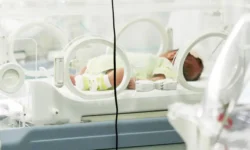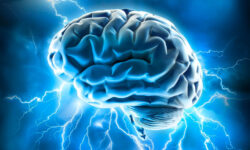Children who have been diagnosed with severe forms of Cerebral Palsy often face numerous challenges, such as: chronic pain, epilepsy, limited mobility and coordination, limited communication capabilities, cognitive impairments, visual and hearing disabilities, and more. Although severe cases of CP may be very difficult, there are a number of treatments that can offer hope.
It can feel devastating when a child is diagnosed with cerebral palsy. Parents often have many questions about what they can do next to help improve their child’s condition. Fortunately, although Cerebral Palsy is a permanent condition, a long term treatment plan can significantly improve the life of people with cerebral palsy.
Early intervention and a well crafted treatment plan are key to getting a child the right care to help their specific symptoms.
Meet Laura Brown
A nationally respected CP birth injury attorney
Laura Brown has dedicated her entire career to birth injury representation, including cases involving cerebral palsy. As a passionate advocate for children and families, not to mention a nationally recognized attorney for birth injury cases, Laura helps even the playing field for her clients by exclusively representing babies and their families.
If she believes your baby’s injury was avoidable and should have been prevented, Laura’s not afraid to go up against even the largest hospital corporations or insurance companies. Years of devoted practice have instilled her with confidence, experience and the skills to match.
Therapy
Therapy treatment plans include a wide and vibrant network of options for helping improve Cerebral Palsy. Some forms of therapy focus on the physical challenges children with Cerebral Palsy face, while other forms of therapy focus on the emotional and mental challenges.
Finding the right type of therapy for a child may improve a child’s capacity to participate in regular day-to-day activities and may improve a child’s overall independence.
Physical Therapy
Physical therapy is one of the most common and effective forms of treatment for Cerebral Palsy. Physical therapy is focused on improving the child’s strength, flexibility, coordination, balance, and so on.
Physical therapy can help at all ages of development. A physical therapist will take into consideration the child’s age and current difficulties to design a treatment regime that seeks to maximize the child’s development.
Early intervention can help prevent contracture, a condition where the stretchy tissues of the body’s joints and limbs are replaced by rigid ones, leading to stiffness and rigidity. Physical therapy can help prevent or limit this condition from occurring, leading to a lifetime of greater mobility.
Orthotics and assistive devices can also help reinforce the body’s weaknesses–casts, splints, braces, and more can provide improvements in posture and balance and support greater mobility as a child develops.
Speech Therapy
Speech therapy covers much more than just verbal communication, as the name implies. In addition to communication, speech therapists and speech pathologists can help address issues with eating, breathing, and swallowing.
Overcoming these types of issues may prove fundamental to achieving greater levels of independence. Patients who struggle with eating and breathing and swallowing often require careful and round-the-clock supervision.
Of course a speech therapist can also help with communication problems as well. Even if a child struggles with speech, a speech therapist can introduce assistive equipment and technology to help non-verbal or semi-verbal patients learn to overcome communication barriers.
Occupational Therapy
Occupational therapists can be thought of as therapy anywhere it’s needed. Occupational therapists work in the home, in schools, on playgrounds, and at work.
Similar to physical therapists, occupational therapists can help severe Cerebral Palsy patients by evaluating the areas where it’s possible to make small gains and helping implement a program to work on growth and development.
Occupational therapy can help a child play and learn, establish a routine, boost feelings of confidence and accomplishment, and lead to enhanced independence.
Massage Therapy
Massage therapy is an alternative form of therapy focused on treating the body’s connective tissues and muscles.
Massage therapies can be helpful for relieving and managing pain, increasing flexibility, and promoting improved muscular development. Massage can also promote feelings of relaxation and wellbeing, increase circulation, and improve sleep.
Massage therapy as a form of treatment for severe Cerebral Palsy patients hasn’t received as much attention from prominent medical journals as other forms of treatment. However, the American Massage Therapy Association (AMTA) has published in the National Institutes of Health (NIH) supporting claims that massage can improve sleep patterns.
Recreational Therapy
The purpose of recreational therapy is to introduce a person to activities that will improve the person’s emotional and or physical well-being. As a child grows up, it can be hard emotionally to feel unable or limited in their ability to participate in physical activities with other children.
Recreational therapy is a great way to help a child have fun, play, and connect with other people. From learning to ride a bike and skateboard to horseback riding and basketball, recreational therapy is a creative and encouraging way to learn and grow.
Medications
Oral muscle relaxants and muscle / nerve injections can help manage pain and treat complications in severe Cerebral Palsy patients.
Drugs like botox and dysport can be injected in trouble areas where muscles are especially tight, while drugs like Valium, Dantrium, Glablofen, Lioresal, and Zanaflex can be taken orally to relax the muscles.
Side effects and dependency issues may arise when taking medications, so speak to a medical professional before starting or stopping any medications.
Children with Cerebral Palsy often have problems with poor muscle tone. Either their limbs are too rigid or too floppy, or sometimes their coordination is limited. Problems with muscle control sometimes be addressed through medication. Medication can be used to improve motor functioning and help manage pain.
Muscle and Nerve Injections
OnabotulinumtoxinA (Botox, Dysport) and other medication may be injected into the muscles or nerves to help treat tight muscles. Side effects can include difficulty breathing, swallowing, pain, and flu-like symptoms.
Oral Muscle Relaxants
Diazepam (Valium), tizanidine (Zanaflex), baclofen (Gablofen and Lioresal), and dantrolene (Dantrium) are drugs commonly used to relax muscles.
Side effects of these drugs can include irregular blood pressure, liver damage, a general drowsiness, excessive drooling, and dependency risks.
Getting help for a child with HIE or Cerebral Palsy
can make a big difference
Because early intervention is often key to helping improve a child’s wellbeing, it’s important to act swiftly. At the Brown Trial Firm, our Houston birth injury attorneys can help you investigate your case, find answers to your questions, and determine whether you are entitled to compensation. We offer case reviews at no cost or obligation. Many birth injuries that cause cerebral palsy could have been prevented.
Surgery
Surgery for cerebral palsy is a serious treatment usually reserved for extreme cases, however, surgery can be beneficial when a child’s condition is resistant to other forms of treatment such as physical therapy and medications.
Children with severe contractures or deformities may benefit from orthopedic surgery. Orthopedic surgeons can help by lengthening the muscles and tendons to ease spasticity, or realign bones to promote better mobility and posture. Legs, feet, ankles, arms, and wrists may feel better and become more functional with corrective surgery.
Another popular procedure among severe CP cases is selective dorsal rhizotomy (SDR). SDR involves cutting the nerves that are sending messages from the muscles to the brain with the effect of reducing the spasticity of the muscles sending those messages.
After a successful SDR procedure, many patients achieve improved posture, balance, motor control, and independence.
Hearing impairments are not unusual among severe Cerebral Palsy patients–cochlear implants can be surgically implanted to transmit sound directly to the inner ear, providing a sense of sound to people who are profoundly deaf or severely hard of hearing.
For children with difficulty eating and drinking, a g-tube can help deliver nutrition and hydration as a semi-permanent or permanent solution.
Surgery may be appropriate when other treatment plans have not been effective. Surgery may be able to help both muscle and bone problems that are causing pain or muscle abnormalities.
Orthopedic Surgery
In cases of severe deformities, orthopedic surgery may be necessary to correct the position of the bones or joints. Through surgery, a doctor may be able to help lengthen muscles and tendons that are shortened from contractures. Orthopedic surgery may reduce pain and increase mobility.
Selective Dorsal Rhizotomy
In severe cases of CP when a child is in pain and other treatments have not worked, a doctor may recommend selective dorsal rhizotomy. This treatment involves cutting nerve fibers in the body to relax the muscles and reduce pain. However, a common side effect of this invasive surgery is numbness, so this option should only be explored with caution.
Family Support and Education
Raising a child with CP can be emotionally and physically taxing. Part of your child’s success is also taking good care of your own physical and mental wellbeing. In our Community Resources section, we refer to many communities where you can get support for yourself in addition to your child.
As a parent, you should try to be receptive and open minded to the challenges that come with CP. Be encouraging to yourself and to your family. Learn positive coping mechanisms for the difficult times, and celebrate the victories when they come. Never be afraid to ask questions and to advocate for your child.
Talk with Your Doctor About a Treatment Plan
With all of the different ways treatment can help, it may feel overwhelming, confusing, but hopefully encouraging to learn about treatment options for CP. The next step is to make a list of your child’s symptoms and talk with your doctor. Ask as many questions as you can, and work to establish a treatment plan that fits your child’s needs.
Contact a Cerebral Palsy and Birth Injury Attorney
Getting help for a child with a birth injury can make a big difference. Early intervention and early treatment is often key to helping improve a child’s wellbeing. You must act quickly.
If you have questions about whether your child’s birth injury was caused by a preventable medical error, then our attorneys at Brown Trial Firm may be able to help.
Sources:
What are common treatments for cerebral palsy? (2020). https://www.nichd.nih.gov/. Retrieved 12 May 2020, from https://www.nichd.nih.gov/health/topics/cerebral-palsy/conditioninfo/treatments
Cerebral palsy – Diagnosis and treatment – Mayo Clinic. (2019). Mayoclinic.org. Retrieved 6 November 2019, from https://www.mayoclinic.org/diseases-conditions/cerebral-palsy/diagnosis-treatment/drc-20354005


